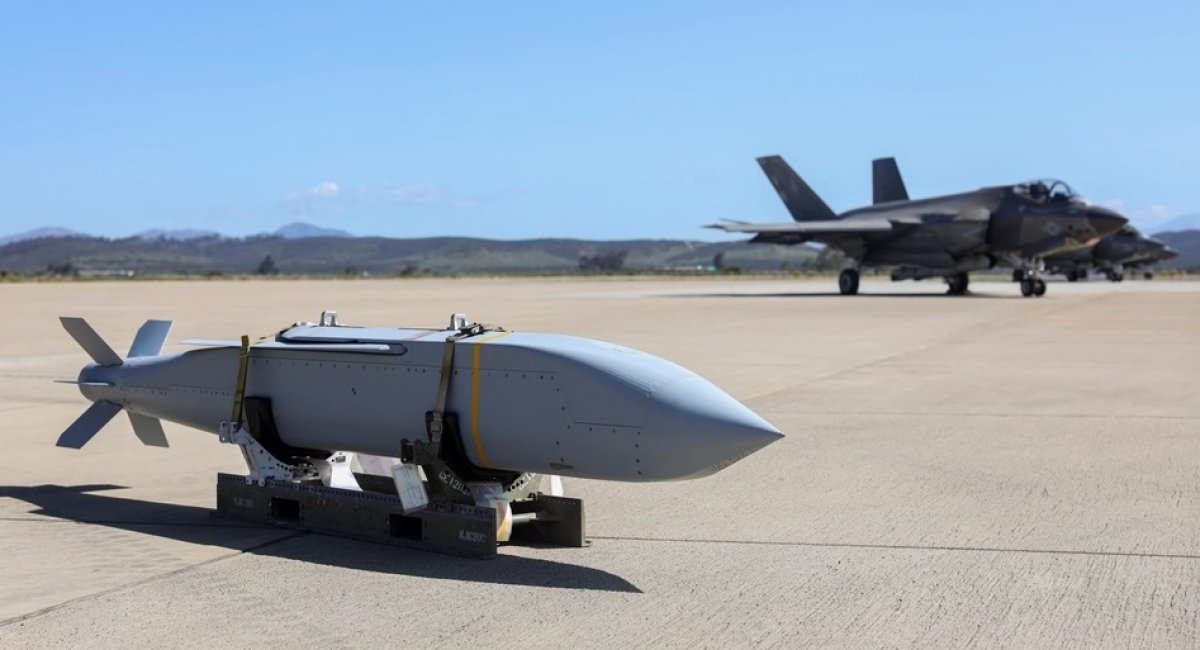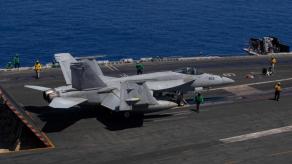Although the AGM-158 JASSM cruise missile has frequently been discussed as a prospective long-range weapon for Ukraine’s F-16 multirole fighters, reports now suggest that the upcoming U.S. aid package, estimated at $375 million, will instead include the AGM-154 Joint Standoff Weapon (JSOW) from RTX.
Politico, citing sources familiar with the matter, writes that this package, expected to be finalized and announced on Monday, September 23, will also include artillery ammunition, spare missiles for anti-aircraft systems, and other supplies. However, the inclusion of the AGM-154 JSOW is a strange decision, and here’s why.
Read more: Ukrainian Air Force Has for the First Time Shown the Detailed Use of JDAM-ER and Revealed Its Actual Range (Video)

While the AGM-154 JSOW is one of the key weapons compatible with the F-16, it’s not a missile but a stealthy, precision-guided glide bomb. Weighing about 500 kg, it lacks the long-range strike capability of a cruise missile, instead offering a maximum range of just 130 km when dropped from high altitudes.
But the main problem is, Ukrainian pilots often can't fly at high altitudes due to the threat posed by russian long-range air defense systems and the superiority of enemy fighters. So the only option left is to fly as low as possible and only make quick, steep climbs right before releasing their weapons — thus significantly limiting the range. For example, when using the JDAM-ER glide bomb from a MiG-29, Ukrainian pilots can only achieve an effective range of around 40 km.
For the AGM-154 JSOW, a similar low-altitude launch would yield approximately the same ranges. Some sources suggest that, in low-altitude scenarios, the JSOW’s range could be as little as 22 km, though this might refer to a strictly horizontal release. Furthermore, unlike the JDAM-ER, which is a relatively inexpensive kit costing tens of thousands of dollars, the JSOW has a hefty price tag, estimated at $250,000 to $500,000 per unit in the early 2000s.
Given these factors, it raises questions about the role the AGM-154 JSOW would play in Ukraine’s arsenal and why the U.S. chose to supply it if reports are confirmed.

Important to note, though, the JSOW does have unique advantages. Its satellite navigation system is more resistant to electronic warfare, a critical feature since the baseline variant relies only on inertial and satellite navigation without homing. Losing one guidance system greatly reduces its accuracy. Additionally, the JSOW’s stealth technologies make it harder to detect and intercept.
Another possible reason for this transfer could be the warhead. The AGM-154A variant, usually reserved exclusively for the U.S. forces, carries a cluster warhead with 145 BLU-97/B Combined Effects Bomb submunitions, each weighing 1.5 kg and capable of both anti-armor and fragmentation effects.

There’s also the AGM-154C version, which features a two-stage BROACH warhead designed to penetrate fortified targets, weighing approximately 225 kg in total. This variant is still in production and used by the U.S. Navy’s carrier-based aviation, equipped with its own additional heat-seeking guidance system. The AGM-154C is the only modification left in service, as the U.S. Air Force retired its JSOW bombs in 2008.
Exported versions, however, are typically the AGM-154A-1, where the cluster warhead has been replaced with a unitary high-explosive warhead. This adaptation was made notably simple: the new warhead was fitted into the submunition container, similar to the design of the AGM-154C.

The yet-to-be-confirmed $325 million aid package will most likely be part of the Presidential Drawdown Authority, meaning the weapons will come directly from U.S. military stockpiles. If so, the options available for transfer are the remainders of cluster AGM-154A cluster bombs, assuming they haven’t been completely phased out, or the AGM-154Cs for targeting fortified structures.
While the features of the AGM-154 JSOW may justify its inclusion, the decision appears untimely given Ukraine’s urgent calls for the AGM-158 JASSM — a true long-range missile that is critical for striking currently unreachable russian targets hiding far behind the frontlines.
Read more: Another GRAU Arsenal Covering a Huge Area and Ammunition Base with North Korean Shells Destroyed














